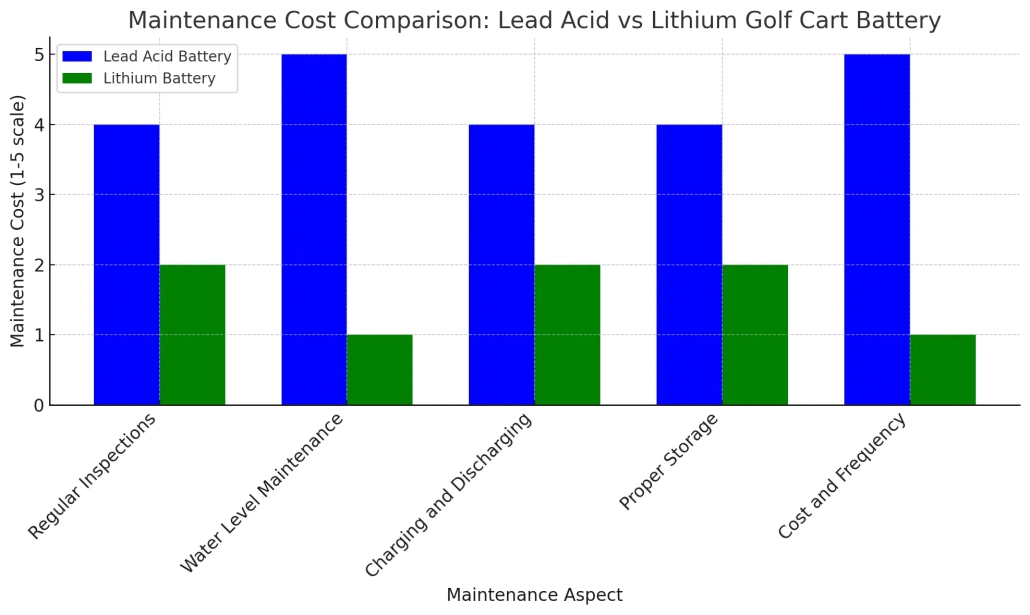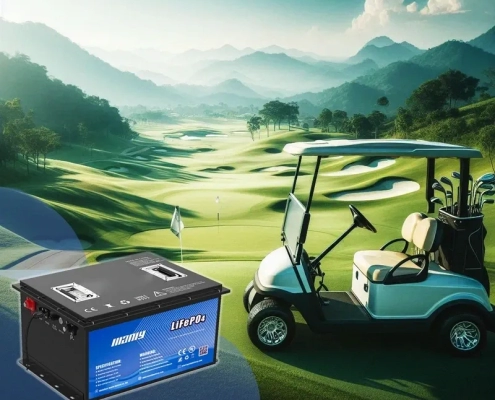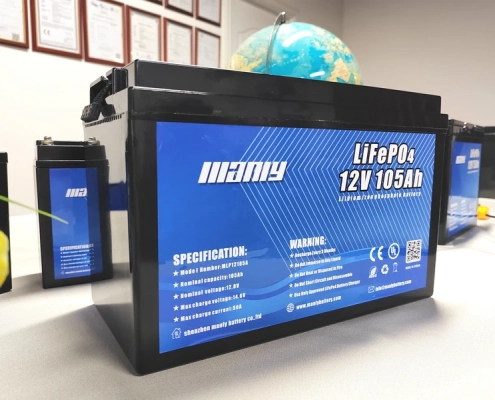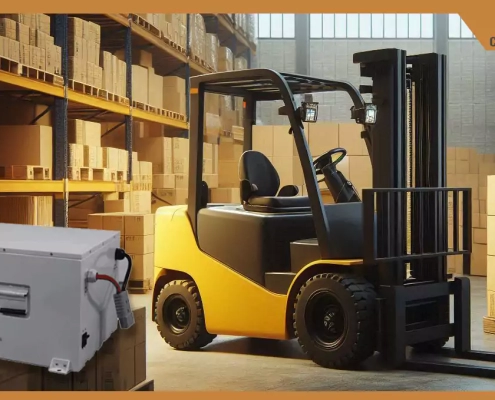Lead Acid vs Lithium Golf Cart Battery Maintenance in 2024
Table of Contents
Proper maintenance of your lead acid golf cart battery and lithium golf cart battery is crucial to ensure they perform well and last a long time. This guide provides easy steps for effective lead acid golf cart battery maintenance and lithium golf cart battery maintenance, helping you keep your golf cart batteries in top condition.
Lead Acid Golf Cart Battery Maintenance
Maintaining a lead acid golf cart battery is essential for ensuring its longevity and optimal performance. Here are some straightforward steps to help you with lead acid golf cart battery maintenance.
Regular Inspections
Performing regular inspections is the first step in effective lead acid golf cart battery maintenance. Here’s what to look for:
- Physical Damage: Check the battery case for any signs of damage, leaks, or deformation. If you find any damage, determine the cause and replace the battery if necessary.
- Cleanliness: Keep the battery and terminals clean. Use a solution of distilled water and baking soda (1 gallon of water to 1 pound of baking soda) to clean the battery case, removing any acid residue, corrosion, or dirt. Rinse thoroughly and dry completely.
- Terminal Connections: Ensure the terminal connections are tight and secure. Loose or corroded terminals can affect performance and cause short circuits. Follow the supplier’s recommendations for terminal connection torque, and use a wire brush to clean the terminals.
Water Level Maintenance
Most golf cart batteries are lead-acid and require regular watering. Follow these steps to maintain proper water levels:
- Check Water Levels: Remove the vent caps and inspect the electrolyte level in each cell. The electrolyte should cover the battery plates but be below the vent wells.
- Add Distilled Water: If the level is low, add distilled water to each cell. Do not use tap water as it may contain impurities that can damage the battery.
- Avoid Overfilling: Overfilling can cause the electrolyte to overflow during charging, which can damage the battery. Fill the cells just enough to cover the plates.
Charging and Discharging
Proper charging and discharging practices are crucial for lead acid golf cart battery maintenance:
- Follow Manufacturer Instructions: Always adhere to the supplier’s guidelines for charging and discharging your battery. Overcharging or undercharging can significantly reduce battery life.
- Regular Charging: Charge the battery after each use, especially if it has been significantly discharged. Avoid leaving the battery in a discharged state for extended periods.
- Prevent Sulfation: Lead-acid batteries are designed for deep cycling, but sulfation can occur if the battery is left discharged. Always recharge the battery after use, especially if it is below 50% charge.
Proper Storage
If you plan to store your golf cart for an extended period, proper battery storage is vital for effective lead acid golf cart battery maintenance:
- Fully Charge the Battery: Before storing, ensure the battery is fully charged to prevent sulfation.
- Disconnect the Battery: Disconnect the cables or use a battery disconnect switch to prevent slow discharge over time.
- Cool, Dry Storage: Store the battery in a cool, dry place, away from extreme temperatures and humidity. Consider using a charger with a maintenance mode for off-season storage.
Cleaning the Battery
Keeping the battery clean helps maintain its efficiency and longevity:
- Regular Cleaning: Dirt and debris can corrode terminals and reduce efficiency. Clean the terminals regularly using a solution of baking soda and water, followed by a thorough rinse.
Avoiding Overcharging
Overcharging can cause permanent damage to your lead acid golf cart battery:
- Quality Chargers: Use a high-quality charger with a built-in regulator to prevent overcharging.
Balancing the Battery
Balancing the battery ensures equal charging across all cells:
- Equalizing Charge: Periodically perform an equalizing charge to balance the cells. This involves charging the battery to a higher voltage and letting it discharge naturally. Many high-quality chargers perform this task automatically.
Avoiding Deep Discharge
Deep discharge can reduce battery life and efficiency:
- Regular Charging: Avoid discharging the battery below 50% of its capacity.
By following these maintenance steps, you can keep your lead acid golf cart battery in top condition, ensuring reliable performance and a longer lifespan. Regular care and proper usage are key to maximizing the efficiency and longevity of your golf cart batteries. Effective lead acid golf cart battery maintenance ensures your golf cart is always ready to go when you need it.

From the chart, it is evident that lead acid batteries have higher maintenance costs and more frequent maintenance requirements compared to lithium batteries. The initial cost of lithium batteries is higher, but they offer significant savings in maintenance over time.
Yes, lithium golf cart batteries require maintenance, but it is less frequent and less intensive compared to lead acid batteries. Key steps include regular charging, avoiding over-discharge, tightening connections, and keeping the battery area clean. Proper storage practices, like fully charging before long-term storage and keeping the battery at a cool, dry place, are also essential. Regular care ensures optimal performance and longevity.






